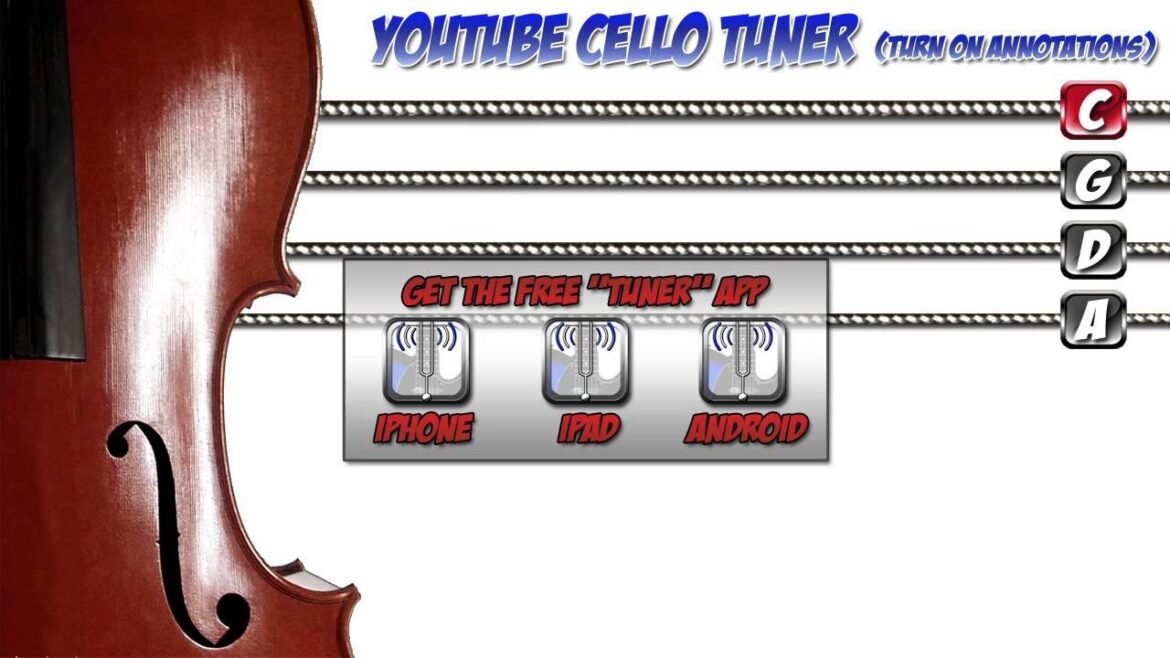Looking for the perfect solution to keep your cello in tune effortlessly? Enter the cello tuner – a must-have tool for every cellist. This compact device is your ultimate ally in achieving pitch-perfect tones, whether you’re a beginner or a seasoned player. With its user-friendly interface and precise tuning capabilities, the cello tuner ensures your instrument sounds its best every time you pick it up. Say goodbye to out-of-tune notes and hello to harmonious melodies with the help of this handy gadget.
The Ultimate Guide to Cello Tuner: Mastering the Art of Perfect Pitch
Introduction to Cello Tuner
Playing the cello is a beautiful and rewarding experience. However, to create harmonious music, it’s crucial to ensure your instrument is tuned correctly. This is where a cello tuner comes in handy. A cello tuner is a tool that helps musicians adjust the pitch of each string on the cello to achieve precise notes. In this comprehensive guide, we will delve into the world of cello tuners, exploring their types, how to use them effectively, and tips to maintain your cello’s tuning.
Types of Cello Tuners
There are several types of cello tuners available on the market, each with its unique features. The most common types include clip-on tuners, pedal tuners, and smartphone apps.
Clip-On Tuners
Clip-on tuners are convenient and easy to use. They attach directly to the headstock of the cello and detect the vibrations of the strings to determine the pitch. Clip-on tuners are portable and ideal for practicing at home or on the go.
Pedal Tuners
Pedal tuners are more advanced and are typically used by professional musicians. They are placed on the floor and can tune multiple instruments simultaneously. Pedal tuners offer greater accuracy and precision compared to clip-on tuners.
Smartphone Apps
With the rise of technology, there are now smartphone apps available that function as cello tuners. These apps use the device’s microphone to analyze the pitch of the strings and provide real-time feedback. While smartphone apps are convenient, they may not offer the same level of accuracy as dedicated tuners.
How to Use a Cello Tuner
Using a cello tuner is simple, and with practice, you can quickly master the art of tuning your instrument like a pro. Here’s a step-by-step guide on how to use a cello tuner effectively:
Step 1: Attach the Tuner
If you are using a clip-on tuner, attach it to the headstock of your cello. Ensure it is securely fastened to pick up the vibrations accurately.
Step 2: Turn on the Tuner
Switch on the tuner and select the tuning mode for the cello. Most tuners offer different modes for various instruments, so make sure you choose the one designed for the cello.
Step 3: Tune the Strings
Pluck each string on the cello one by one and adjust the tuning pegs accordingly to match the desired pitch indicated on the tuner. Repeat this process for all strings until they are perfectly tuned.
Step 4: Check the Overall Tuning
Once you have tuned all the strings individually, play a few chords or scales to check the overall tuning of the cello. Make any final adjustments if necessary to achieve perfect harmony.
Tips for Maintaining Your Cello’s Tuning
Keeping your cello in tune is essential for producing beautiful music consistently. Here are some tips to help you maintain your cello’s tuning:
Store Your Cello Properly
Store your cello in a cool, dry place away from direct sunlight and extreme temperatures. Sudden changes in temperature and humidity can affect the tuning of your instrument.
Regularly Check and Adjust the Tuning
Make it a habit to check the tuning of your cello before each practice session or performance. Regularly adjusting the tuning pegs will help keep your cello in tune longer.
Replace Old Strings
Over time, cello strings can wear out and lose their elasticity, affecting the instrument’s tuning. Replace old strings with new ones as needed to maintain optimal tuning.
Get Regular Maintenance
Take your cello to a professional luthier for regular maintenance and adjustments. A professional can ensure that your cello is in top condition and properly tuned.
In conclusion, mastering the art of cello tuning is essential for any cellist looking to create beautiful music. Whether you opt for a clip-on tuner, pedal tuner, or smartphone app, the key is to practice regularly and pay attention to the nuances of your instrument’s tuning. By following the tips outlined in this guide and investing time in tuning your cello, you can unleash the full potential of your musical talent and enjoy the melodic sounds of a perfectly tuned cello.
Cello Tuner (CGDA) in A 440Hz
Frequently Asked Questions
How does a cello tuner work?
A cello tuner is a device that helps you tune your cello by detecting the pitch of each string. It can either be a physical tool that you clip onto the instrument or a digital app that uses the microphone of your device to listen to the sound of the strings and provide you with feedback on whether they are tuned correctly.
Can a cello tuner be used by beginners?
Yes, a cello tuner is a valuable tool for beginners as it helps them develop an ear for tuning and ensures they are playing in the correct pitch. It provides visual or audio indicators to guide the player in adjusting the strings to the right notes.
Are there different types of cello tuners available?
Yes, there are various types of cello tuners on the market. Some are clip-on tuners that attach to the scroll or body of the cello, while others are digital tuner apps that can be downloaded to smartphones or tablets. Each type has its own features and advantages, catering to different preferences.
How accurate are cello tuners in tuning the strings?
Cello tuners are designed to be highly accurate in detecting the pitch of each string. They are programmed to recognize the specific frequencies corresponding to the standard tuning of a cello (C-G-D-A), ensuring precise tuning of the instrument. However, it is still important for the player to have a good understanding of tuning principles and make fine adjustments by ear when necessary.
Final Thoughts
In conclusion, finding the right cello tuner is crucial for maintaining the instrument’s pitch accuracy. A cello tuner helps ensure that the strings are in tune, enhancing the quality of music produced. With the help of a cello tuner, musicians can easily adjust the strings to achieve the desired sound. Investing in a reliable cello tuner will significantly contribute to a musician’s overall performance and enjoyment.




